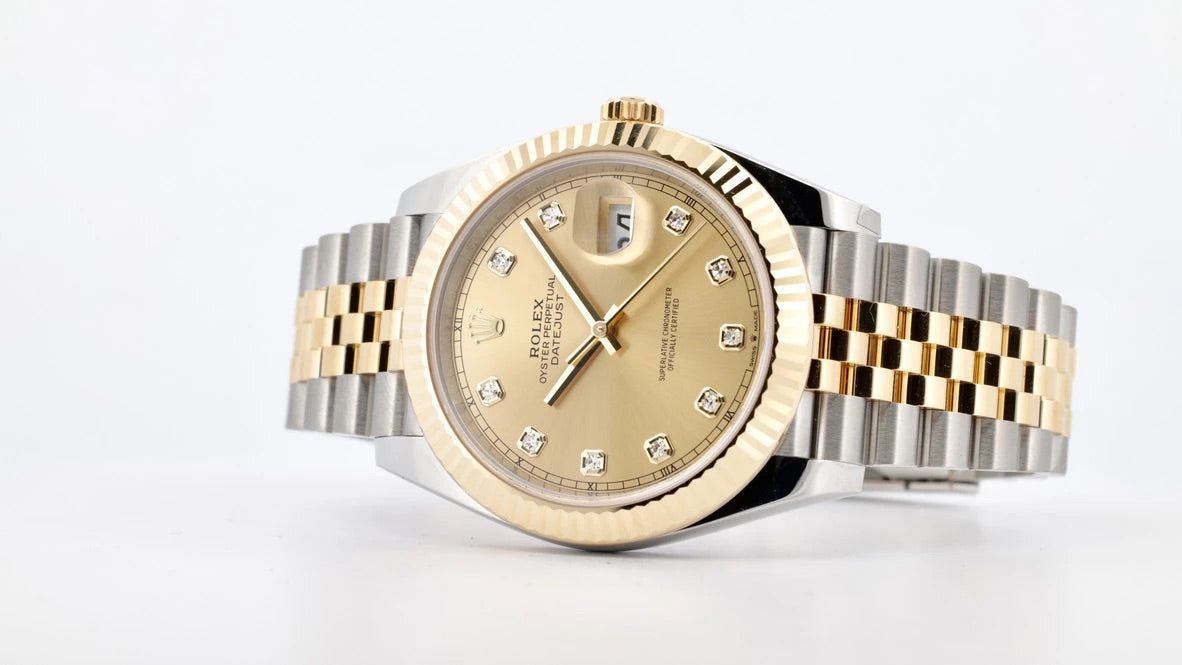In the realm of luxury horology, the value of a watch doesn't only lie in its precision, heritage, or brand lineage. The materials from which a watch is crafted play a pivotal role in its perceived worth and its potential for value appreciation over time. Often, the debate circles around three primary materials: solid gold, stainless steel, and two-tone combinations. Here, we delve into why solid gold and stainless steel watches have often shown better value retention than their two-tone counterparts.
1. The Purity of Tradition: Solid Gold Timepieces
Gold has been a symbol of luxury, wealth, and prestige for millennia. Here's why solid gold watches maintain their value:
-
Perception of Value: Pure gold watches are seen as the pinnacle of luxury in the watch world. They exude an unmistakable aura of opulence and prestige.
-
Material Worth: The inherent value of gold as a precious metal means that the watch will always have a baseline value tied to the gold content itself.
-
Timeless Appeal: Solid gold watches have a classic charm, ensuring that they never really go out of fashion.
2. The Strength of Simplicity: Stainless Steel Timepieces
Stainless steel might not have the same opulent ring as gold, but its value retention in the horological world is undeniable:
-
Durability: Stainless steel is resistant to corrosion, staining, and minor scratches. This resilience means that stainless steel watches can look pristine for longer, contributing to their value retention.
-
Versatility: The neutral, sleek appearance of stainless steel makes it suitable for almost any occasion, ensuring a broad appeal.
-
High Demand: Particularly for certain iconic watch models, stainless steel versions are highly sought-after in the market, driving up their resale value.
3. The Two-Tone Dilemma
Two-tone watches, which often combine gold and stainless steel, undoubtedly have their appeal. They offer a balance between the luxury of gold and the durability of stainless steel. However, there are reasons they might not hold value as solidly:
-
Trend Sensitivity: Two-tone designs have gone in and out of fashion over the years. While they enjoy periods of popularity, they can also face times where they're less in demand.
-
Niche Appeal: Not everyone is enamored by the mix of metals. Purists might lean towards solid gold for luxury or stainless steel for versatility and durability.
-
Perception of Compromise: Some view two-tone watches as a compromise — not quite achieving the luxury status of solid gold or the utilitarian robustness of solid stainless steel.
The Solid Choice Wins?
While the world of horology is vast and varied, with room for all kinds of tastes and preferences, market trends have often shown a preference for the purity of solid gold or the simplicity of stainless steel when it comes to value retention. However, it's essential to remember that the true value of a timepiece isn't just in its resale price. The joy it brings to the wearer, its sentimental value, or the story behind it can be just as precious. As always, when choosing a watch, go with what resonates with you personally, not just with market trends.


